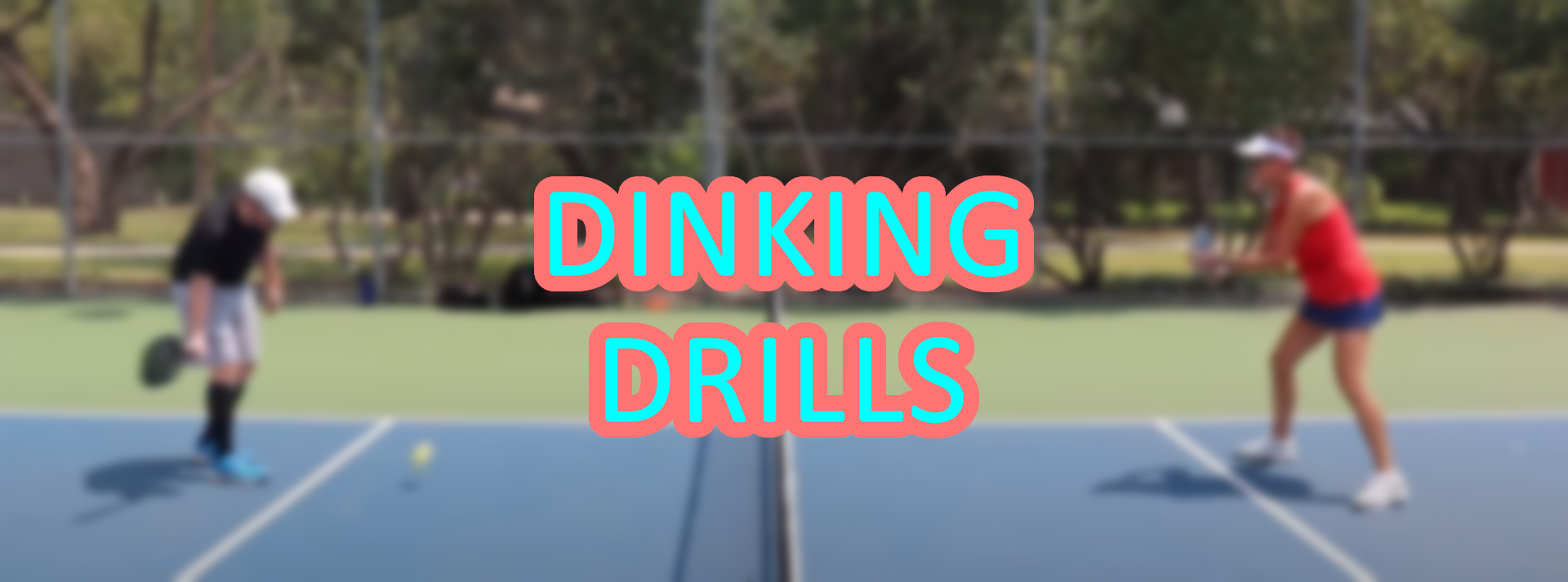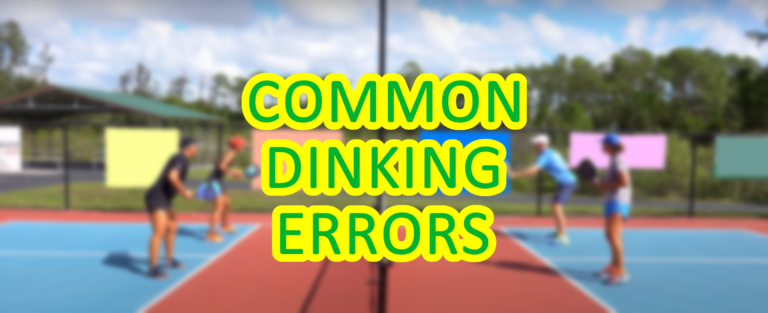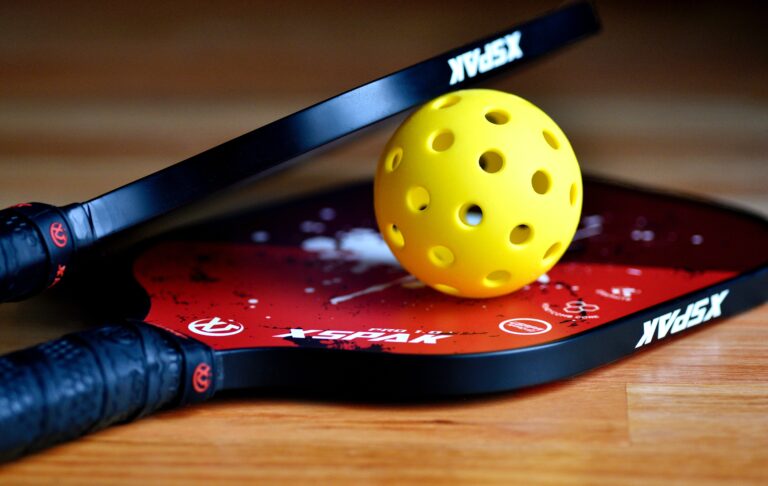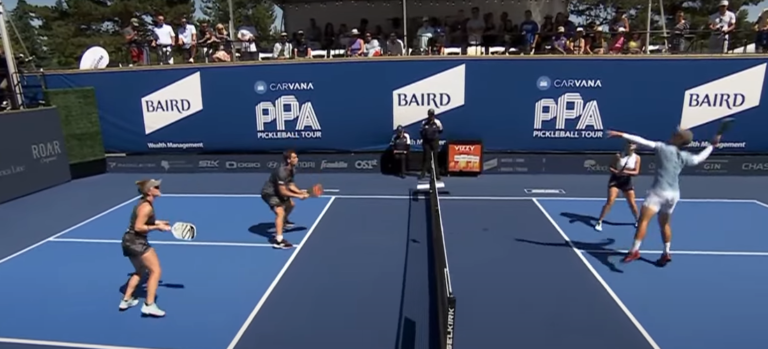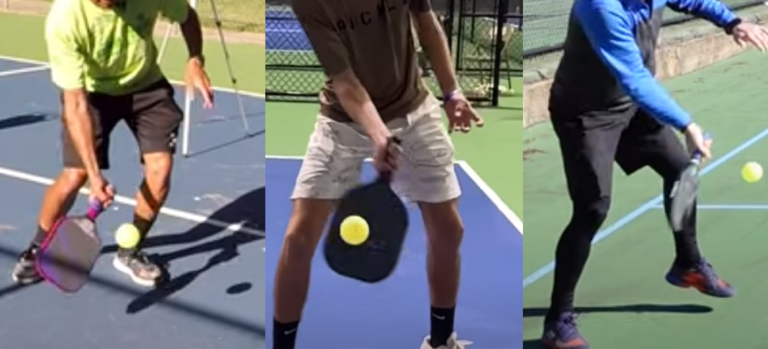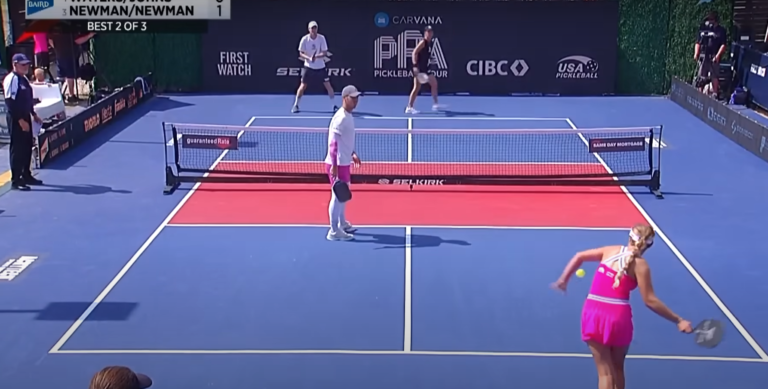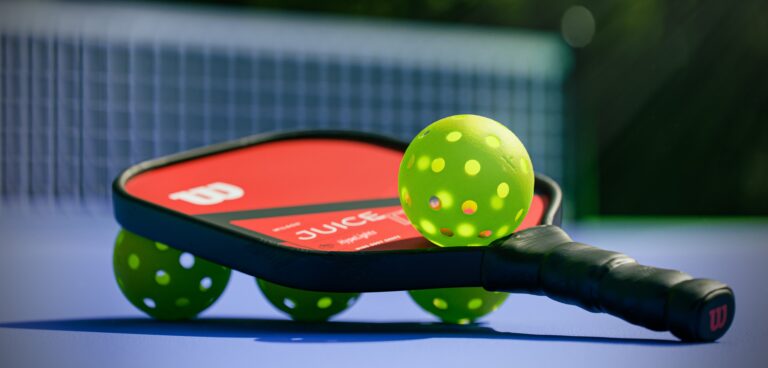Dink Drills
Pickleball dinks are an essential part of the game, and mastering them can give players a big advantage. Dinking is a skill that requires good hand-eye coordination and accuracy, as well as quick thinking and decision making. Practicing the following dink drills will help pickleball players become confident in their dink shots. Use these dink drills to increase your chances of winning matches.
Ready to amp up your pickleball dink drills? Let’s get started!
Warm-up Dink Drills
To begin, you and your partner should stand on opposite sides of the court along the non-volley zone line. Toss the ball gently to your partner with your paddle hand. Aim for an area about a foot into the non-volley zone. Your partner should move into the kitchen and catch the ball with their paddle hand. They should use the same motion like they are about to hit a dink. Focus on using the correct footwork and bending from the hips and knees to get into position. The idea here is that you are pushing the ball over the net with both your arm and legs – not hitting it.
Once you and your partner have a few good dinks under your belt, it’s time to use the same movements using your paddles.
Shuffle Dink Drills
Shuffle dink drills works on improving your movement across the court. They also help sharpen your accuracy and paddle control while dinking.
Back and Forth Shuffle Drill
The object of this drill is to get you to be more comfortable moving the ball across the court. This is to vary your shots from just dinking straight back and forth. Start this drill with you and your partner on opposite sides of the court. Stand with both of you along the non-volley zone line at one end of the net. Start dinking back and forth while shuffling across the court to the other side of the net.
Alternate Shuffle Drill
With this drill, players take turn shuffling down the non-volley zone line and back. Start by standing at one end of the net across from your partner. During the dink rally, one of the players shuffles down the line to the other side of the net. They then comes back when they reach the end. Once back in the original position, the other player then take their turn. They shuffle down the line to the other end of the net and back. Pay close attention to your form. Make sure that after every dink you shuffle and split-step into a ready position for the next dink.
Touch Dink Drills
This drill focus more on improving your ball and paddle control. There are four variations from easiest to hardest.
For the first variation start by dinking the ball to your partner. Your partner will let it bounce on their side of the court. They then tap the ball and then let it bounce at their feet and then dink it back to you. You will then let the ball bounce and tap it. Then let it bounce at your feet before dinking it back to your partner.
In the second variation, you eliminate the second bounce. Start by dinking the ball to your partner. They will let the ball bounce at their side of the court. They then tap it up with their paddle, and then dink it back to you.
In the third variation you start with dinking the ball to your partner. Instead of letting the ball bounce at their feet, your partner will catch the ball with a volley. They then tap the ball up before letting the ball bounce and then dink it back to you. You eliminate all the bounces in the last variation. Start by volley-dinking the ball to your partner. They catch the ball by tapping it up and then volley-dinking it back to you.
Bowtie/Figure-8 Drill
Start this drill by dinking the ball straight across to your partner. Your partner will then dink the ball back cross-court. You will then dink the ball back straight across the net. Your partner will then hit the ball back cross-court again. The trajectory of the ball should resemble a bowtie or a figure 8. You can start the rally by determining a relatively small square playing space. You can gradually enlarge the area as you play covering more of the court.
These dink drills involve various types of shots to help improve accuracy, control, power and consistency when playing the game. By practicing these drills regularly, pickleball players can develop tactical skills such as placement of the ball on the court. The goal is to be able to hit consistently accurate dinks. And no matter what kind of shot your opponent throws at you!
